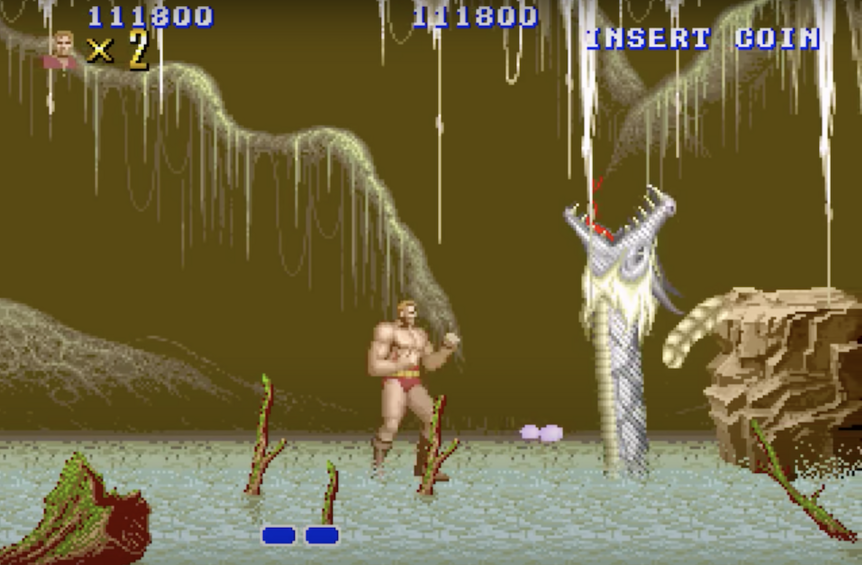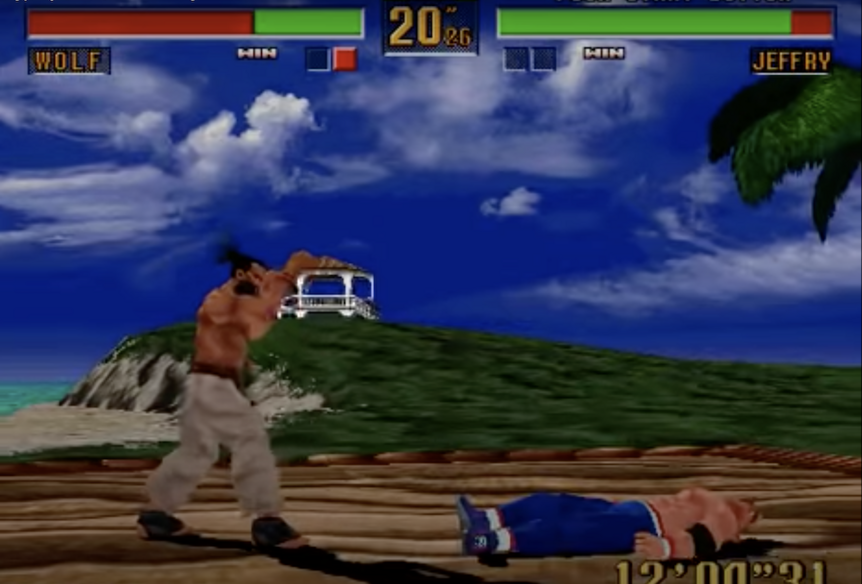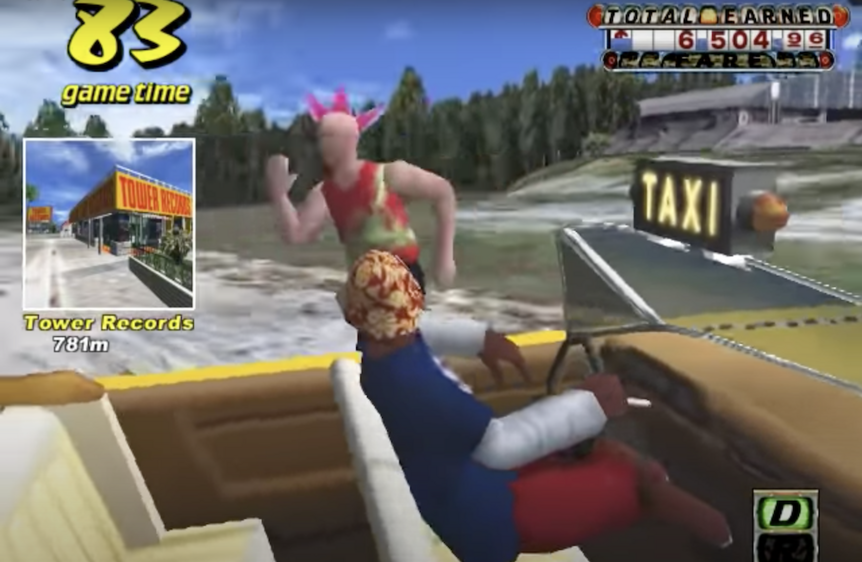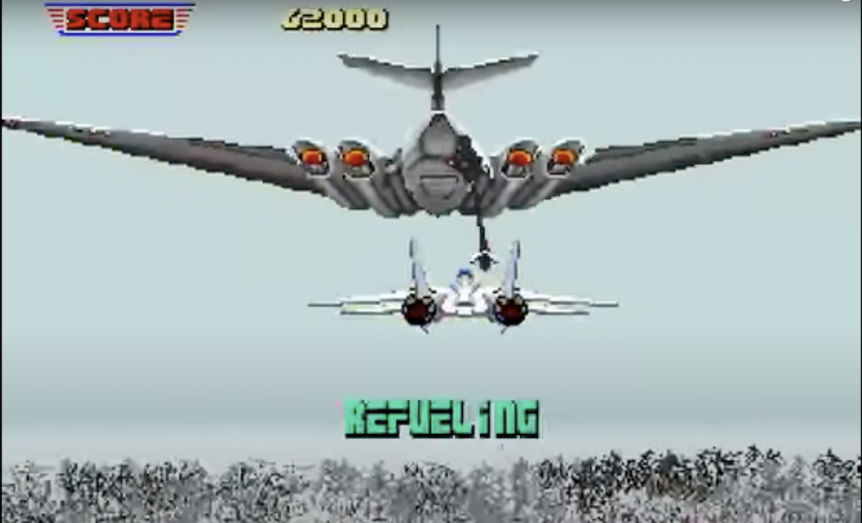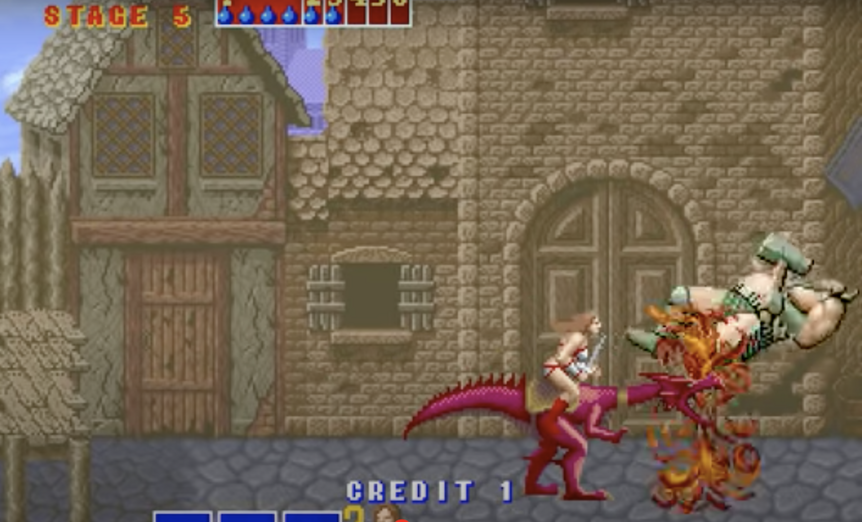Create a free profile to get unlimited access to exclusive videos, sweepstakes, and more!
From 'Crazy Taxi' to 'Space Harrier': A look back at some of SEGA's greatest arcade games
As SEGA exits the arcade business for good, we remember some of the company's greatest entries.
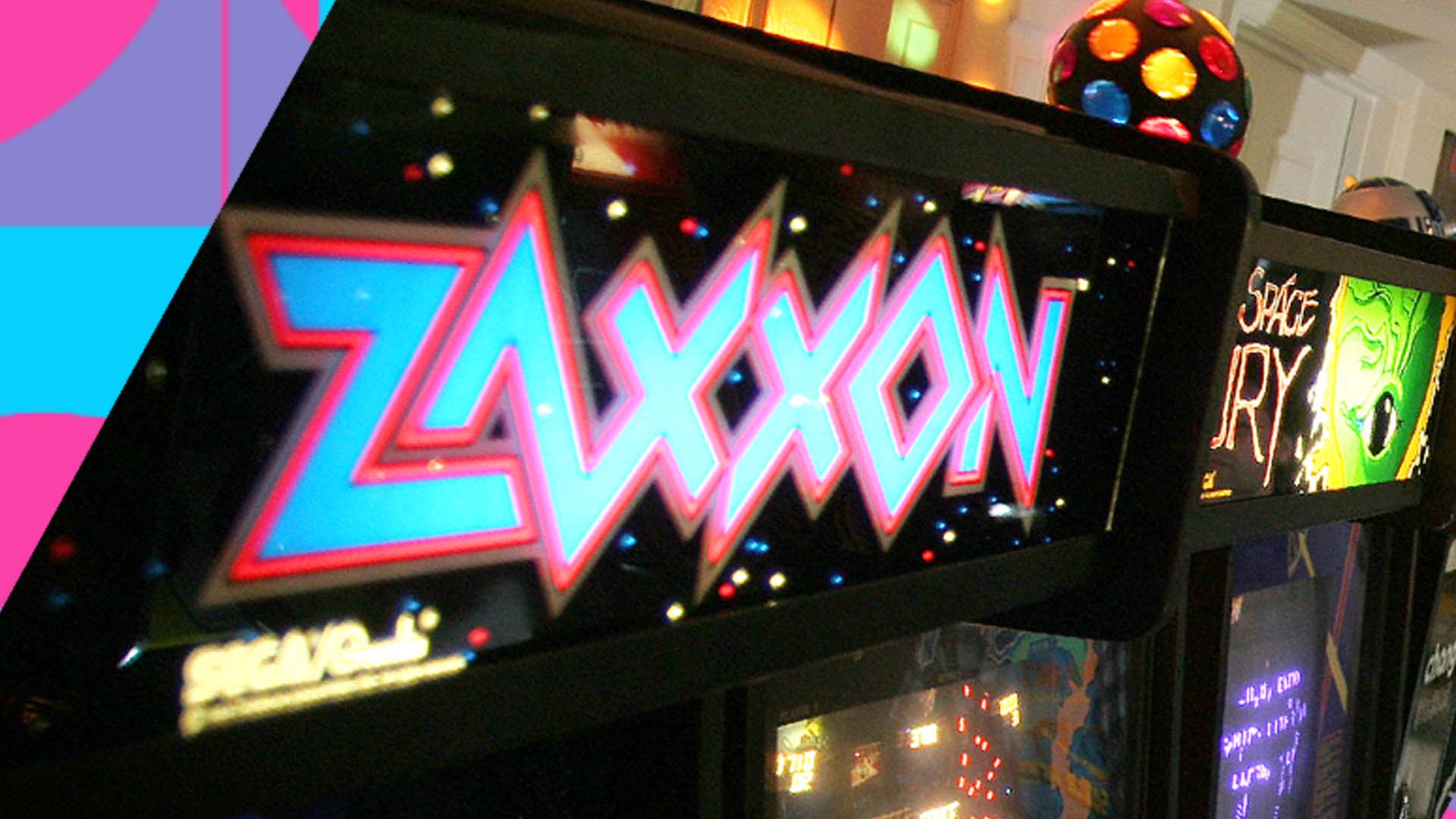
No worries, Sonic fans: SEGA as a gaming company isn’t going anywhere fast. But one of the biggest names in video game history recently marked the end of an era, selling off the remaining Japanese arcades that had long been a tentpole destination for players who revere the company’s storied past. And while it’s not the end of the world, it does feel symbolic. After all, SEGA was one of the iconic early names, alongside giants like Atari, Bandai Namco, and Midway, to grace the sides of gaming cabinets in giant letters under the neon-lit haze of arcade gaming’s earliest days.
That got us to talking and reminiscing, and eventually even waging debates over old-school arcade trivia (like whether Frogger, developed by Konami but manufactured by SEGA, can really be considered a SEGA game). We’re far too sentimental about those glory days to try to rate SEGA’s greatest arcade hits, but we’re just sentimental enough to relive the thrill of our favorites — you know, the games that kept us digging for spare change in skating rinks, pizza shops, convenience stores, and (of course) arcades all through the 1980s and 1990s.
In other words, don’t take this list of eight SEGA greats as any kind of best-of ranking. Think of it instead as a wistful walk down memory lane…one that, for a magic period in the days before the Dreamcast, made every quarter seem like the shiny little ticket to arcade gaming treasure.
Altered Beast
Altered Beast had some of the mythic makings of a full-scale series, but alas, the original arcade game remains the high point of a fighting franchise that never quite found firm footing in the burgeoning home console market. No matter, because SEGA’s 1988 arcade hit remains a quirky, oddly addictive highlight that points up all the wacky weirdness the company is famous for today. Borrowing its premise from Greek mythology (but never fully committing to it the way God of War would later do), Altered Beast transformed players into magically mutated were-creatures that blasted undead enemies with truly distinctive abilities in a side-scrolling fighter that, thanks to a smattering of light platforming elements, kept gamers on their toes. Even the ending, which revealed that the whole story setup was basically a stage act, bore SEGA’s unique brand of weirdness... if, that is, you were cozy enough with the quirky mechanics to fight your way to the finish.
Virtua Fighter
Midway’s Mortal Kombat entered the fighting-game arms race around the same time as Virtua Fighter, dropping in arcade form in 1992. But SEGA’s first foray into martial arts finishing moves was ahead of its time in 1993, bringing impressive polygonal 3D graphics into the arena while shading the action with an early-days grudge story; a tale fueled by the sinister J6 corporation with mysterious motives for staging the world’s biggest fighting tournament. Better still, it baked real competitive spirit right into the gameplay: Long before AI enemies and online play made squaring off against opponents an exercise in suspended disbelief, Virtua Fighter forced two human players to test their skills by going head to head. Sure, it’s since been eclipsed by the SoulCaliburs and Mortal Kombats of the console world. But playing Virtua Fighter in the early 1990s felt like a premium experience — and one that has never quite been duplicated again in arcade form.
Turbo
Oh, man, what an immersive track-day rush Turbo was — even if it was insanely difficult. Coming in the early 1980s, SEGA’s third-person racer somehow felt like a proto-VR experience, especially in its sit-down cockpit form (SEGA made a stand-up variant too, complete with an accelerator pedal at the bottom.) Also featuring a steering wheel and a gear selector, Turbo was all about razor’s-edge danger, with the threat of wiping out lurking around every hair-raising bend. It also lived up to its name: Even at the dawn of the arcade racing game era, Turbo was fast, forcing players to get good (or at least get a big enough stack of quarters to get that way). Everybody who played arcade games back in the day knew that one jerk who seemed to have a magical knack for instinctively mastering a difficult game, and along with Williams Electronics’ Defender, Turbo was among the games that separated the pretenders from the truly skilled. Maybe we’re just jealous that we never achieved that status…but even 40 years after its 1981 release, Turbo can take all our tokens any day.
Space Harrier
Plenty of old-school arcade games revolved around the same basic control setup: a directional joystick (like Pac-Man) and maybe a handful of buttons (like Donkey Kong). But SEGA had a knack for making the most of an arcade cabinet’s ability to field more finely-tuned controls, and Space Harrier — a wild on-rails sci-fi shooter whose deluxe version even featured a motion-sim case that bobbed and moved with the action — was one of the company’s coolest implementations of that idea. The 1985 brainchild of SEGA mastermind Yu Suzuki, it even foreshadowed some of the colorful and completely bonkers fast-fantasy elements that would find their way, six years later, into the original Sonic the Hedgehog. It also just looked cool: Any arcade that had a deluxe version of Space Harrier probably had a well-worn footpath pressed into the carpet — straight from the front door to the slung-back cockpit’s pilot seat.
Crazy Taxi
Kinda funny that Tony Hawk’s Pro Skater and Crazy Taxi both came out in the same year. Before it was a Dreamcast staple, Crazy Taxi found fast success in arcades, where its ridiculous mix of licensed music and crashworthy conveyance made it a sort of spiritual complement — only a few tons heavier — to its music-fueled, skateboarding console cousin. More lightheartedly loony and a bit less larcenous than Grand Theft Auto (which had debuted two years earlier in 1997), Crazy Taxi was a near-instant arcade hit before quickly making the leap over to SEGA’s turn-of-the-century console, where it settled in as the Dreamcast’s resident casual game — the kind that was almost as much of a blast to watch, even back in 1999, as it was to play. In arcades and in living rooms, it also introduced an entire generation of wannabe drivers to a killer soundtrack anchored by punk legends The Offspring and Bad Religion…and that’s not too bad a rap sheet for a 25-cent fare.
After Burner
Creator Yu Suzuki already had a high-flying hit under his belt with 1985’s Space Harrier, but his After Burner — made to simulate the piloting pressures of handling an F-14 Tomcat fighter jet — launched SEGA’s upscaled arcade experiences into the stratosphere. Debuting in 1986 with a deluxe cabinet that strapped players into a cockpit-style setup, After Burner swept the horizon with players grabbing the flight stick to deploy heat-seeking missiles in immersive dogfights. The carrier-based skirmishes felt immediate and realistic enough, at the time, to somehow make everyone forget that they were playing a third-person game. Having to wear an actual seat belt — you know, to deal with all the tilting and rolling — probably helped, too.
Golden Axe
Golden Axe built its own Conan-style mythology and sent players on a grown-up fantasy mission to take down the kind of demons and devious creatures that now populate the darkness in modern-day greats like The Witcher: Wild Hunt and Demon’s Souls. Even though its mechanics were par for the game’s late-1980s course, Golden Axe packed in a ton of variety and graphical “wow” moments into its side-scrolling, hack-and-slash formula. It also wrested more than a little replay value out of letting you play as one of three distinct warriors (each with their own unique backstory), and delivered a beast of a final boss in the form of the Death Adder, a cartoonishly huge hunk of blade-wielding hatred who possessed the game’s titular mythic weapon. With a moody synth soundtrack that rose and fell to match the varied scenery, Golden Axe leapt out of arcades to become a must-have action hit on SEGA’s Genesis console.
Zaxxon
Everything about Zaxxon was sci-fi cool. Tapping into video games’ early promise of unlocking eager players' spaced-out imaginations, it nailed the look and feel of everything that made piloting a pixellated spaceship great: the off-kilter isometric view, the wild neon color scheme (one that probably had no business adorning serious space outposts), and, of course, the ship itself — a tilting, hovering triangle that blasted its way through hell before getting to the real pièce de résistance: a giant mega-fortress of a robot. With its altimeter-based gameplay, it was also ridiculously tough to master — until, that is, it finally clicked. Back when Zaxxon released in 1981, the sight of a hapless player walking away from the machine only seconds after dropping in a quarter was all too common. But once you figured out how not to crash, you became an instant believer in Zaxxon’s quirky, tough-but-fair way of putting your oversized-joystick skills to the ultimate test.
